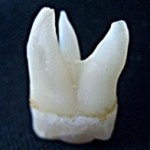 RSS FEED
RSS FEED
Archive for the ‘Musings’ Category
Fibromyalgia – a New Context
January 7th, 2010
The context in which we look at an issue can make a huge difference in our way of perceiving and interacting with the issue. When I began exploring the on-line world of support for Migraineurs and chronically ill folks, I came very early upon Teri Robert’s site, Help for Headaches, and there on the site, she had this badge: 
I wondered at the time, was this really empowering, to emphasize having a disease? It is a disease, but we can have an impact on our own health by developing an awareness of our own systems, and learning to relax and calm their reactivity. I had spent some years learning that myself and that’s what I wanted to share with others.
The more I looked at it, though, the more I got Teri’s point. I realized that for the many of us who have had our condition minimized and scoffed at, the recognition that we have a disease is empowering. Our problems are real, and biologically based; our pain is real. We live with the consequences of having a hyper-reactive nervous system. For those of us who have wondered what was wrong with us, if we were crazy, if we were somehow bringing the pain upon ourselves, it is empowering to recognize that we have a disease, not just a headache! Starting from the context of a disease, we can learn about it, learn what impacts our disease for better or worse, learn to manage the disease, and to manage our life with the disease. Acceptance is the first step, and gives us a foundation to build on. It makes it possible to move forward. We can say, “Okay, I have this disease. Now what? What am I going to do about it?”
For over 15 years, since I was pregnant with my son in the fall of 1994, I have been living with fatigue, lassitude, body aches, on and off difficulty concentrating, frequent sinus infections, difficulty fighting off  disease, and, in the last 10 years, ever increasing Migraines. I have gone down many paths to address these issues. With regard to the Migraines, I learned a great deal about the disease, worked with doctors to find medication and supplement combinations that helped me, and learned to practice relaxation to calm my system. My Migraine frequency is down considerably. Not so the fatigue and general pain issues, however. I have tried many different nutritional regimens, and learned a lot about what foods are most helpful to my body. I have gone great lengths to balance my hormones, and have definitely seen an improvement in my overall health and stamina through doing that. No matter what I did, however, the fatigue and pain issues did not change much.
disease, and, in the last 10 years, ever increasing Migraines. I have gone down many paths to address these issues. With regard to the Migraines, I learned a great deal about the disease, worked with doctors to find medication and supplement combinations that helped me, and learned to practice relaxation to calm my system. My Migraine frequency is down considerably. Not so the fatigue and general pain issues, however. I have tried many different nutritional regimens, and learned a lot about what foods are most helpful to my body. I have gone great lengths to balance my hormones, and have definitely seen an improvement in my overall health and stamina through doing that. No matter what I did, however, the fatigue and pain issues did not change much.
Many people with Migraine also have Fibromyalgia, and as I got to know more people with Migraine I heard a lot about the other disease as well. My reaction for quite a while was, “Oh, I probably have that one too, but I don’t want to know about it.” It felt overwhelming to me to have to deal with another diagnosis. I practiced active avoidance. Then I saw Dr. Young at Jefferson Headache Center and he listened to me talking about my fatigue, and he pressed the Fibromyalgia tender points, and I gained a new context. Thanks, Dr. Young!
I’m not kidding with the thanks. It was just like Teri’s badge above, the pieces of a puzzle came together. I already knew that my central nervous system had some serious processing issues, well this was just another manifestation of that. In addition to having my neurons fire off and produce Migraines in reaction to certain stimuli, I have an increased reaction to pain and exertion. If I bang my elbow, the pain moves out in ripples from the point, increasing for a time like an echo in an echo chamber. If I expend more muscular energy than usual, my muscles ache for days as if I had the flu. If I am active and push myself either physically or mentally, I have a kind of fatigue that is beyond tired; it is the bone-weary exhaustion of someone who has been pushed beyond the limits of their endurance.
I have gained a lot from the context of having another disease – Fibromyalgia. I have gained a community of  fellow sufferers, who care, who understand, whose wisdom and experience are available to me. I have gained the relief of knowing that I am not lazy, or losing my mind, or fundamentally bad, I am a person with a(nother) disease. And this context helps me to find solutions. I know now that stretching helps, and I can push myself to stretch when my muscles hurt and I really don’t want to. I know that my fatigue is not something to fight or to cover over with caffeine, but that it is a signal to rest. I know that getting some gentle exercise each day, and gradually increasing my exertion, will help me. I know that there will be better and worse days, but that each day can be handled, one at a time.
fellow sufferers, who care, who understand, whose wisdom and experience are available to me. I have gained the relief of knowing that I am not lazy, or losing my mind, or fundamentally bad, I am a person with a(nother) disease. And this context helps me to find solutions. I know now that stretching helps, and I can push myself to stretch when my muscles hurt and I really don’t want to. I know that my fatigue is not something to fight or to cover over with caffeine, but that it is a signal to rest. I know that getting some gentle exercise each day, and gradually increasing my exertion, will help me. I know that there will be better and worse days, but that each day can be handled, one at a time.
I haven’t posted for a while, and I’m glad to say that my new Migraine preventive is helping a great deal. My Migraine frequency is down by about 60% over the past few months. The medication also helps to damp down my anxiety and makes me very sleepy. It seems to increase my REM sleep, which is a sleep stage that Fibromyalgia often steals away. Sleeping better definitely impacts the Migraines; it also makes me less fatigued and less anxious. So at the same time that I have taken on this new diagnosis, Fibromyalgia, I have seen some of its symptoms decrease.
I’m learning this one. It’s a listening to my body, to my inner sense of myself, in a new way. Similar to the way I already listened, a familiar tune but in a different key, perhaps. The biggest gain from the new context is another level of self-acceptance. I am not a bad person trying to be good; I’m just a sick person learning to be as well as possible.
Tags: disease management, fatigue, fibromyalgia, migraine
Posted in Communicating, Managing, Musings | Comments (0)
How do we Celebrate and Still take Care of Ourselves?
December 14th, 2009
 For a number of years, my husband and I hosted a big post-Christmas holiday gathering for my extended family. This gathering had gone on at my parents’ house for many years prior. Each of the smaller nuclear families (mine, my siblings’, aunt & uncle & cousins’) would have their own Christmas Day at home, and then sometime afterwards everyone would get together for a big collective meal and gift-giving. Since we all live several hours apart, this would generally turn into a weekend-long extravaganza, with many people sleeping over for several nights. The part where we were all together generally involved 14 – 22 people.
For a number of years, my husband and I hosted a big post-Christmas holiday gathering for my extended family. This gathering had gone on at my parents’ house for many years prior. Each of the smaller nuclear families (mine, my siblings’, aunt & uncle & cousins’) would have their own Christmas Day at home, and then sometime afterwards everyone would get together for a big collective meal and gift-giving. Since we all live several hours apart, this would generally turn into a weekend-long extravaganza, with many people sleeping over for several nights. The part where we were all together generally involved 14 – 22 people.
My family gets along well, and while some readers may roll their eyes at the thought of so many relatives gathered, it has been a largely joyous occasion. When my parents sold their big house and moved on to an apartment and then a retirement community, my sister took on hosting Thanksgiving and we took Christmas. We cut the expense, noise, tumult and confusion of the gift giving by drawing lots for gifts to adults, and cut the cooking difficulties by doing some degree of pot-luck.
But… I went on hosting these events some years beyond  when some family and friends were questioning my ability to do it. I have been living now for about 14 years with chronic illness, and when hosting big events, there have been predictable outcomes. I would wear myself out, either with clean-up and preparation, or with running around taking care of the guests in my home, or with cooking, or with trying to keep up with the mess generated by my husband’s enthusiastic (delicious) and whirlwind cooking.
when some family and friends were questioning my ability to do it. I have been living now for about 14 years with chronic illness, and when hosting big events, there have been predictable outcomes. I would wear myself out, either with clean-up and preparation, or with running around taking care of the guests in my home, or with cooking, or with trying to keep up with the mess generated by my husband’s enthusiastic (delicious) and whirlwind cooking.
My challenged immune system would hand me an illness or infection a majority of the time. Or my sensitive nervous system would react to the added stress and noise and confusion by hitting me with a major Migraine. Or both. I would try to compensate by planning better, systematizing everything. This would both create more work for me and make my husband crazy due to my micro-managing. And then there were the crowds themselves for gift-giving or major meals, where I never do well. My head would be spinning in no time, my anxiety level would hit the roof with the noise and over-stimulation, and I would become cranky and short with people. I would spend some part of the celebration closed up in a room by myself in pain, and inevitably the guests would have to pick up a lot of the work it took to get through the weekend.
We moved four years ago to our current home, which is about 35% smaller than our last home. We did a  huge renovation on this house and part of our planning was around how to accommodate a big crowd for Christmas. The time we have been in this house, however, has been the same time period as the worst of my chronic Migraines. We hosted one Christmas two months after moving in, with many things still in boxes and the construction not quite complete. We hosted one other year. When we put many tables together to sit down for a meal, you could not leave your place at the table without 2 or 3 other people getting up as well. When we tried to open presents in the front room with the Christmas tree, some people had to stand in the next room and look on. Another year we tried doing an abbreviated gathering when some family members were away, only inviting a few others. I had mixed feelings and was not clear with everyone about this, and hurt the feelings of those left out.
huge renovation on this house and part of our planning was around how to accommodate a big crowd for Christmas. The time we have been in this house, however, has been the same time period as the worst of my chronic Migraines. We hosted one Christmas two months after moving in, with many things still in boxes and the construction not quite complete. We hosted one other year. When we put many tables together to sit down for a meal, you could not leave your place at the table without 2 or 3 other people getting up as well. When we tried to open presents in the front room with the Christmas tree, some people had to stand in the next room and look on. Another year we tried doing an abbreviated gathering when some family members were away, only inviting a few others. I had mixed feelings and was not clear with everyone about this, and hurt the feelings of those left out.
Last year, with tears and soul searching, we bowed out of hosting. We went to my sister’s for two big holiday gatherings, and we’ll be doing it again this year. My home will stay quiet; our Christmas day will be simple and relaxed; we will be with family in a less stressful space. But… I miss having my family here. I miss sharing my life, my things, my space with the people I love. In answer to the title of this post, this is what we are doing to celebrate and still have me take care of myself. But… I’m running 2 weeks at a time without a Migraine these days, and have more energy, and I have to admit I am thinking about how to take the whole thing on again – maybe next year. We’ll see.
How do you celebrate and still take care of yourself?
– Megan
Tags: chronic illness, holidays, Migraines, self care, Stress
Posted in Communicating, Managing, Musings | Comments (1)
How much Pain?
December 2nd, 2009
My daughter had her wisdom teeth out yesterday. Once the anesthesia wore off she started feeling pretty  serious pain. She took her first Lorcet and called me on the intercom about half an hour later, sounding panicked – she needed more pain meds, right now! We got her some ibuprofen, but tried to explain that the meds take a while to take effect, and to give it a chance. Today she is in bed with a swollen face, pain and nausea, quite miserable. We’re bringing the ice packs, the medications, the mushy food, and trying to comfort her the best we can.
serious pain. She took her first Lorcet and called me on the intercom about half an hour later, sounding panicked – she needed more pain meds, right now! We got her some ibuprofen, but tried to explain that the meds take a while to take effect, and to give it a chance. Today she is in bed with a swollen face, pain and nausea, quite miserable. We’re bringing the ice packs, the medications, the mushy food, and trying to comfort her the best we can.
I’ve been thinking about the nature of pain. At nineteen, my daughter has never had surgery before, never had a broken bone or other serious injury, and the only serious illness she has had was the chicken pox at age four. Her pain today is real and I can’t be the judge of how much pain she has. Her pain may be worse because unfamiliar. When I was her age, I had had: Migraines for at least six years, a broken arm, stitches on my face, major abdominal surgery, the mumps, the chicken pox, scarlet fever, the measles… Pain and I were old acquaintances (I won’t say friends). I have written before about how you never get used to pain. Pain is, in some ways, continuously and horribly new every time, every moment. But at the same time, pain can become familiar, and for that reason, perhaps less frightening.
 The most severe pain I can remember was when I broke and dislocated an elbow. I went into shock, I believe from the pain. Both my labors were quite painful, as I had an unproductive pattern of contractions, which came two or three in a row without pause, and each set didn’t do as much work as one normal contraction. Childbirth pains are different, I think, because any pain you experience is for something, something big and very important, and you know there is an end in sight. At twenty-nine I fell and herniated a disk and lived for years with nagging, stinging pain in my low back and right leg. I have also had Migraines where the pain was so intense I felt moment by moment as if I could not stand one moment more, where all I could do was rock myself and sob, to quote a Migraine buddy of mine. I also had my wisdom teeth out at twenty-two and I don’t remember how that pain compared, but I do remember two miserable and very drugged up days.
The most severe pain I can remember was when I broke and dislocated an elbow. I went into shock, I believe from the pain. Both my labors were quite painful, as I had an unproductive pattern of contractions, which came two or three in a row without pause, and each set didn’t do as much work as one normal contraction. Childbirth pains are different, I think, because any pain you experience is for something, something big and very important, and you know there is an end in sight. At twenty-nine I fell and herniated a disk and lived for years with nagging, stinging pain in my low back and right leg. I have also had Migraines where the pain was so intense I felt moment by moment as if I could not stand one moment more, where all I could do was rock myself and sob, to quote a Migraine buddy of mine. I also had my wisdom teeth out at twenty-two and I don’t remember how that pain compared, but I do remember two miserable and very drugged up days.
I have learned, though, that something changes when pain is familiar, when it is not mysterious. Yes, frequent severe pain is debilitating, exhausting, dis-enheartening beyond belief. But at the same time, with familiarity it can lose some of its power over us.
What do I mean by that? This is difficult to talk about. Pain is real, but at the same time our experience of it is subjective. It’s not “all in our heads” in the sense of being imagined. It is not produced by neurosis or by being weak or hysterical. But at the same time, we can change and effect our experience of pain. When my Migraines became very frequent, I learned a practice of deliberate relaxation, based in yoga, biofeedback and guided imagery. A part of the practice is to look at pain head on – to be very aware of the experience of pain. Not to fight it or try to pull away from it, but to meet it, recognize it, describe it and observe it. In that process we get some detachment from it. Sometimes we can reduce it significantly, or make it disappear. Even if that doesn’t happen, we can make it much easier to bear.
I teach these relaxation techniques to Migraineurs and others with chronic illnesses because I believe we can truly make a difference for ourselves when we learn to focus inward. I believe we should fight for better treatment, strive and work to understand and manage our own systems, but when faced with pain we must practice a kind of acceptance. I’m not talking about being a doormat or giving up. I am talking about looking the pain in the eye – saying yes, there it is, it feels like this, it is this much better or worse than any other pain, it is located here, it behaves like this. Observing it, allowing it to be and allowing it to fade.
I’m not saying this is easy. Don’t ever let anyone tell you you should “just” learn to live with it. There is no “just” about it – it’s hard and takes continual work. I use relaxation zealously in the tough times and then I slack off, and have to pick it back up and get back in practice when the next challenge comes along. Overall I have developed an awareness of my system and its ups and downs. I have less pain in my life, and the pain has less effect on me, than before I began these techniques.
There may be some kind of threshold level beyond which the rules change, or become distorted. I haven’t experienced really frequent or chronic severe pain. Six years ago my Migraine pattern suddenly increased, from a monthly menstrual Migraine plus one or two big ones a year, to three or four major Migraines a week. That was the closest I have come to experiencing truly chronic pain. And three or four times a week I felt something like the panic I heard in my daughter’s voice yesterday. Nowadays pain doesn’t panic me. I may get cranky and resentful, but sooner rather than later i say to myself, Okay here it is again. Be with what’s so, and do what I can to help it ease or pass.
I am learning a new kind of pain as I adjust to fibromyalgia. My body has become a pain amplifier, and a small pain can grow outward with ripples over a day or more until I hurt everywhere. I am having a flare-up today. I ache from head to toe. I am grateful that despite the allover aches, I don’t feel the constant severe pain I hear of from some with fibro. I am practicing what Migraines have taught me, to pace myself, to push only gently, to be with the pain, not to fight it, to know that this too shall pass.
I’m hoping for a better tomorrow, for me, for you, for my daughter. In the meantime, I will be with what’s so. My arms ache and I’m going to rest now.
– Megan
Wisdom tooth image courtesy of Steve Montgomery; broken elbow image courtesy of H Dragon.
Tags: fibromyalgia, Migraines, pain, pain levels, pain management, relaxation techniques, wisdom tooth extraction
Posted in Managing, Musings | Comments (3)
Laid low by my Sinuses
October 19th, 2009
 I just spent a lovely weekend visiting my daughter at college. She is very happy, working hard, very much at home and thriving. And I have to say the weekend was a success story for me, because I managed a marathon week of preparation and a rather strenuous trip with only one mild Migraine. We flew out Thursday evening and were scheduled to take off at 8 pm, but due to winds and rain our flight was delayed 3 hours. On the other end there was a delay in getting to the rental car facility and then we had 50 miles to drive. We got into the hotel at 2 am, and got up before 7 to meet my daughter at an 8:30 class. My husband had a difficult night with his breathing, which meant he snored quite a bit, so I really didn’t sleep more than a few brief dozes. It’s amazing that I only had a very mild Migraine in the middle of the day, and taking a triptan and lying down in the college library for 40 minutes, followed by a nap at the hotel later on, took care of it for me.
I just spent a lovely weekend visiting my daughter at college. She is very happy, working hard, very much at home and thriving. And I have to say the weekend was a success story for me, because I managed a marathon week of preparation and a rather strenuous trip with only one mild Migraine. We flew out Thursday evening and were scheduled to take off at 8 pm, but due to winds and rain our flight was delayed 3 hours. On the other end there was a delay in getting to the rental car facility and then we had 50 miles to drive. We got into the hotel at 2 am, and got up before 7 to meet my daughter at an 8:30 class. My husband had a difficult night with his breathing, which meant he snored quite a bit, so I really didn’t sleep more than a few brief dozes. It’s amazing that I only had a very mild Migraine in the middle of the day, and taking a triptan and lying down in the college library for 40 minutes, followed by a nap at the hotel later on, took care of it for me.
It’s been unseasonably cold here in the East, and out in the upper Mid-west where we were as well, and I have encountered a number of people with colds. I started sniffling out there, and noticed the air was drier than I’m used to. We flew back last night and got diverted to a different airport – all flights into Newark were canceled due to more high winds, and we had to call a friend to get us at the airport, and got in pretty late.
I guess the strains on my stamina – two flights, two late nights, a lot of running and hustling through airports, and even two enjoyable but busy days when I was on my feet a lot – showed up in a weakening of my resistance. I didn’t have a flare up of body pain, like I sometimes do when I exert myself, and I didn’t have continual Migraines, which are common for me on trips where I fly. i have to say my Migraine management plan is working well. I just succumbed to this infection.
I woke this morning with a sore throat, swollen glands, green post-nasal drip, and a feeling like I’ve been hit by a truck. My old familiar friend the sinus infection. Only one of dozens I’ve had in the last 14 years. My nose isn’t particularly congested, it’s all back in my throat. It amazes me to be laid low by something that is nearly invisible, some microscopic invasion of small cavities in my head. No major cold preceded this, just a few days of an itchy nose and a need to sneeze. It seems like other people get great goopy colds and I encounter the virus or whatever it is and it immediately runs into the back of my head and starts this secret war on my system. It’s not that I want my nose to run, it’s just continually hard for me to believe in the thing that knocks me out. I lie around a few hours and then I think I must be well enough to get up, after all, I have no fever, no stuffy nose, no headache, nothing but a sore throat, and then I get up for a moment and ka-boom! Where’s the truck that hit me?
I did a lot of work last week, to get out Thursday afternoon, and leave all work behind for the weekend. Of course I didn’t accomplish everything I planned (the day that happens I can retire, I guess!), and all day today I have been thinking about the things I should be picking up and getting back to today. I barely have the mental stamina to write this, let alone do anything else. I think of something I need to do and then say “Umm…” and forget about it. The infection dulls my brain. I know I just need to rest. For today I am staying in bed and drinking lots of tea and juice and water and taking loads of vitamin C and echinacea and zinc. I have all kinds of important things I want to tell you about – topics for posts backed up, and a newsletter to get out. But… not today.
Tags: Migraine management, sinus infection
Posted in Musings | Comments (0)
Return of the Dizzy Dame
October 5th, 2009
 Wooo! The world is spinning! No, it’s not really much fun. A year ago when I was first seeing my former neurologist I was being evaluated for vertigo, which I was experiencing very frequently. I had an ENG (Electronystagmogram) – a test to determine if my vertigo is vestibular (inner ear-based) or brain-based (Migraine associated), and the results indicated that I had some of each.
Wooo! The world is spinning! No, it’s not really much fun. A year ago when I was first seeing my former neurologist I was being evaluated for vertigo, which I was experiencing very frequently. I had an ENG (Electronystagmogram) – a test to determine if my vertigo is vestibular (inner ear-based) or brain-based (Migraine associated), and the results indicated that I had some of each.
At the time I was experiencing vertigo nearly daily, strongly during and after Migraines, but also at changes in position, walking up stairs, turning, etc. It was August and September of last year when the problem was at its worst. I started Topamax in mid-September, and the vertigo seemed to quiet down and leave within a couple of months. I thought the Topamax was clearing up the vertigo. But since then I have gone up to 75 mg of Topamax and back down to 25 without any change in the amount of vertigo. I’ve been on 25 mg for the last 4 1/2 months now. I am going to eliminate the Topamax in a few weeks, as I have been phasing in nortriptyline for the past month.
For the last week or so I’ve had a sudden return of vertigo. It came in with the pro-drome of a long Migraine last week, and has yet to leave town. I can’t imagine it is related to the Topamax, because I haven’t changed the dosage in months. I don’t see dizziness listed as a nortriptyline side effect anywhere. It’s not constant at this point, but I can’t hang my head over, or bend or straighten up quickly, without getting very dizzy. I’m actually wondering if the vertigo could be related somehow to seasonal allergies, since my fall pollen allergies are kicking in right now as well. I guess a call to my new doctor is in my future.
When I was a kid my brother and sister and I used to spin around and around in the living room until we got so dizzy we would collapse on the carpet. Why isn’t that any fun any more?
– Megan
Spinning break dancer image courtesy of Katie Weilbacher.
Tags: migraine associated vertigo, nortriptyline, Topamax, vertigo
Posted in Medicine, Musings | Comments (0)
Second-Guessing Game
October 1st, 2009
Does this sound at all familiar to you? This is me, talking to me, inside my head:
- My head hurts.
- Oh, it’s 5:00, I’m supposed to leave in 20 minutes to meet J for a farewell drink, maybe this pain will just go away.
- My head hurts.
- I hate to miss J, this is my last chance to see her before she moves away, my head’s not bad, could be just a twinge, maybe it will pass…
- I had a Migraine last night and I haven’t felt fully recovered all day. It’s probably recurring. I should take a triptan now.
- If I take the triptan I definitely can’t go out. This is just minor pain. I can probably still go if I just ignore it.
- Don’t be ridiculous! You need to work tomorrow more than you need to see J tonight!
- Okay, I’m staying home. I’ll call J and say goodbye and I’ll write her a nice note – but I’m not taking a triptan because I took one yesterday and I keep getting head pain in the evenings – I might need one later in the week.
So I stayed in and didn’t take the triptan – and about 10 my head was pounding and I felt nauseous. At that point I took the triptan, and some anti-nausea meds, and tried to go to sleep. I slept badly, with pain in my head nearly all night. I kept waking and checking the clock to see if 2 hours had gone by so I could take another triptan. Then I slept a bit longer and woke after 2, still in lots of pain, and took the second dose. Slept fitfully and around 5 noticed that the pain had let up a good bit. Woke with the alarm at 7.
- I’m supposed to be in court at 9:30 – should I go?
- My head still hurts and I shouldn’t be driving.
- It hardly hurts at all and it might be all gone in a few hours, maybe I could get a ride.
- This Migraine is not 100% gone and I could easily re-trigger it, especially since I had one the day before – I need to break out of this cycle and not keep provoking it.
- People are counting on me to be there. It’s too late to find someone to stand in for me. I’ll be messing up a lot of people’s schedules.
- If you’re sick, you’re sick. If you had the flu they wouldn’t expect you to come to court.
- This isn’t the flu – it’s not that clear-cut; I might be just fine once I get going.
- The stress of having to perform and be coherent when your brain is recovering is going to make it more likely that you get another Migraine, or continue this one.
- I can’t easily make up the money I would be making today – no one gives me paid sick time, and we need what I can earn!
- If you make yourself sicker you’ll miss more days, and miss more opportunities to earn.
So I called the court and told them I was ill and could not come in. I went back to sleep and woke up a few hours later, to this:
- I probably could have done it… other people do it…
I’m not sure they ever shut up, those voices in our heads. But here I am, several hours later, head still hurting, trying to make what I can of the day. Just a Migraineur, intermittently impaired, working around it the best I can.
– Megan
Tags: internal dialogue, migraine, self care, self-doubt, triptans
Posted in Musings | Comments (14)
Cocoa for Migraine Prevention?
September 28th, 2009
 Results of a research study presented at the International Headache Congress in Philadelphia this month show preliminary indications that a diet rich in cocoa may aid in preventing Migraines. Animal studies suggest that cocoa supresses inflammatory responses in the trigeminal nerve, the main nerve involved in Migraine.
Results of a research study presented at the International Headache Congress in Philadelphia this month show preliminary indications that a diet rich in cocoa may aid in preventing Migraines. Animal studies suggest that cocoa supresses inflammatory responses in the trigeminal nerve, the main nerve involved in Migraine.
There’s some irony here as chocolate is identified as a common Migraine trigger food. This may be because of caffeine or tyramine content, however, rather than cocoa content. I don’t know whether the caffeine or tyramine are present in the cocoa, or in some other ingredient of chocolate. The researchers caution that these are early results. If see benefits in humans as well, maybe they will find a way to isolate the anti-inflammatory parts of the cocoa from any potentially triggering parts.
I would expect to see cocoa supplements or extracts coming down the pike. Since I have the good luck not to be triggered by chocolate (in fact, I get some relief from a Migraine by eating dark chocolate) I am going to start now. Cool weather is here – hot cocoa everyday? Why not! Mole sauce? Yum. I think I can come up with a diet rich in cocoa without too much trouble!
– Megan
Chocolate plate image courtesy of avlxyz/Alpha.
Tags: chocolate, cocoa, International Headache Society, migraine prevention
Posted in Current Affairs, Medicine, Musings | Comments (3)
Calling all Redheaded Migraineurs
August 9th, 2009
 Now I know Migraine occurs in all human cultures, and people of all hair colors as well as all sorts of other characteristics, but I am interested in conducting a very unscientific study here… and certainly interested in knowing if any real studies have been done of this (I don’t know of any).
Now I know Migraine occurs in all human cultures, and people of all hair colors as well as all sorts of other characteristics, but I am interested in conducting a very unscientific study here… and certainly interested in knowing if any real studies have been done of this (I don’t know of any).
An article in the New York Times yesterday entitled The Pain of Being a Redhead discussed several studies which indicate that redheads are resistant to anesthesia, take on average 20% more medication to anesthetize (which has been known anecdotally by anesthesiologists for years), and may have a higher sensitivity to pain than the general population.
I shared this link on Facebook and very shortly got comments from 4 redheaded Migraineur friends! Now the comments were all over the place. Most of us agreed that as Migraineurs we deal with so much pain on a regular basis that we think our pain threshhold is higher rather than lower, though several of us have had the experience of being resistant to anesthetic or pain-relieving drugs. But here’s what I’m curious about – is there a high correlation between red hair and Migraine, or was my little flurry of redheaded Migraine buddies just a fluke?
Tara Parker-Pope, the article’s author, states that
a mutation in the MC1R gene results in the production of a substance called pheomelanin that results in red hair and fair skin. The MC1R gene belongs to a family of receptors that include pain receptors in the brain, and as a result, a mutation in the gene appears to influence the
body’s sensitivity to pain.
If we redheads have a genetically altered sensitivity to pain, are we more prone to chronic pain conditions? I have no idea – but I do wonder!
– Megan Oltman
Tags: chronic pain, migraine, New York Times, pain sensitivity, red hair
Posted in Medicine, Musings, Science | Comments (10)
Staying out of the Spotlight
July 22nd, 2009
It’s very uncomfortable to suddenly have one’s vulnerabilities become center stage. I had an odd experience  this week. I haven’t met many Migraineurs yet who actually want their illness to be center stage. We want to be understood, we want support and empathy and help where we need it, but not generally to be fussed over and be the center of attention because of our disease. At least, that’s my impression of the many many Migraineurs I have met! Do you agree?
this week. I haven’t met many Migraineurs yet who actually want their illness to be center stage. We want to be understood, we want support and empathy and help where we need it, but not generally to be fussed over and be the center of attention because of our disease. At least, that’s my impression of the many many Migraineurs I have met! Do you agree?
A few nights ago I had a parents’ meeting to attend for a program my kids are involved in. I’m currently on vacation in a conference center, and the space found for the parents’ meeting was the stage of the auditorium, where they had set up a circle of chairs and turned on all the stage lights. I stepped onto the stage and in every direction there was a spotlight pointed straight into my eyes. I edged my way around for a bit, trying to find some safe angle, but the lights were just everywhere. As often happens in the face of a trigger like that, I got disoriented. I couldn’t figure out whether to stay or go. I can’t imagine what I must have looked like, staggering around the stage. My husband was there and he kind of guided me to a chair, and sat on the floor in front of me. I bent my head down onto his back, threw the hood of my sweatshirt over my head and eyes and asked if they could turn the lights down. Someone said they were trying to dim the lights.
Now at this point my face was hidden in my husband’s back, I felt dizzy and disoriented, and I didn’t know if my voice was loud or muffled. I was worrying about how strange I looked. The woman next to me said something sympathetic and handed me a booklet to further shade my eyes. I thanked her and said, “I’m sorry to seem so dramatic, but those lights will trigger me into a Migraine in no time flat.”
Apparently it wasn’t easy to dim the lights because the meeting started with them still on. My kind neighbor called out, “turn out those lights, we have someone with Migraine problems here!” Several people made suggestions about where else I should sit, and I answered, without picking up my head, “No, then the lights from over there are in my eyes.” My voice sounded whiny and desperate to me. So, they turned out the lights.
This story is not about other people not understanding. I don’t know whether the people in that meeting understood or not. Whether they understoood or not, they were very caring and responsive. The whole meeting sat in the dusk so that I would not have lights in my eyes. This story is about how mortified I felt to have my vulnerability, my weakness, my Achilles heel, my Kryptonite, right up there, center stage, under the spotlights, for everyone to see.
I worried what everyone thought. Did they think I was being dramatic? Were some of the other people there sitting in judgment, annoyed at sitting in the dark, wishing I would just go away? Did I sound as whiny to others as I felt to myself?
Interestingly, I had a chance to talk about the meeting with one of the other parents the next day (it was a very good meeting, by the way), and I made some comment about having made everyone sit in the dark. She looked confused, and then said, “Oh, was it you with the hood over your head?” So obviously, I was not remembered for that! I guess I won’t go down in history here as the drama queen who made them sit in the dark because I SAID the lights would give me a Migraine!
But tell me, why is it so hard to let people see I am less than perfect?
– Megan
Tags: migraine, Migraine triggers, spotlights, vulnerability
Posted in Communicating, Musings | Comments (8)
Quite a Week in Migraine Land
June 27th, 2009
 Hello dear readers, I’ve been quiet this week. It started with my daughter’s high school graduation on Monday – where it has apparently become the fashion to cheer for one’s graduates with air horns. Air horns aimed at the back of the head + bright hot sun & humid weather following many weeks of rain + more black storm clouds rolling in by the end of the ceremony + an emotional day = Migraine! By the way it really sounds like Migraine Puppet and I were at the same graduation, or perhaps are living the same life!
Hello dear readers, I’ve been quiet this week. It started with my daughter’s high school graduation on Monday – where it has apparently become the fashion to cheer for one’s graduates with air horns. Air horns aimed at the back of the head + bright hot sun & humid weather following many weeks of rain + more black storm clouds rolling in by the end of the ceremony + an emotional day = Migraine! By the way it really sounds like Migraine Puppet and I were at the same graduation, or perhaps are living the same life!
I have been blessed with plenty of work to do lately and in the current state of the  economy can’t turn much of it away, so I haven’t been able to devote much time out to Migraines this week. I’ve taken my medications and laid down but I’ve been back up working sooner than would be ideal, and with more storms, more rain, more graduation parties, more emotion (though thankfully no more air-horns!), teenagers’ cars breaking down by the side of the road… it’s been quite the Migrainey week. We’re also getting ready for a graduation party of our own next weekend, deep cleaning the house, stirring up lots of dust!
economy can’t turn much of it away, so I haven’t been able to devote much time out to Migraines this week. I’ve taken my medications and laid down but I’ve been back up working sooner than would be ideal, and with more storms, more rain, more graduation parties, more emotion (though thankfully no more air-horns!), teenagers’ cars breaking down by the side of the road… it’s been quite the Migrainey week. We’re also getting ready for a graduation party of our own next weekend, deep cleaning the house, stirring up lots of dust!
Tomorrow I’m looking forward to taking some time out to talk to Dr. Bill Young about preventing and treating daily headache and intractable Migraine. (Do you think he’ll tell me to slow down?) If you’re registered for the Managing Life with Migraine teleconference series, don’t forget to call in at 4 pm Eastern time. If you’re not registered, there’s still time, just follow the link and sign up, and you’ll get the details to call in.
Hope to talk to you tomorrow!
– Megan
Tags: air-horns, graduation, managing life with migraine, storms
Posted in Communicating, Managing, Musings | Comments (0)
That disclaimer thing...
Remember: nothing we do here is medical advice or treatment or is a substitute for medical advice or treatment. Get competent medical advice to learn more about your migraines, possible treatments and risks.
What's New on Migraine Support Group Coaching |
Recent Comments
- on Calling all Redheaded Migraineurs
- on No, You’re not Crazy, You just Have Migraines
- on No, You’re not Crazy, You just Have Migraines